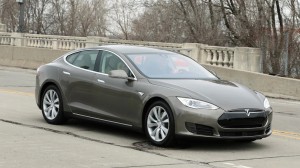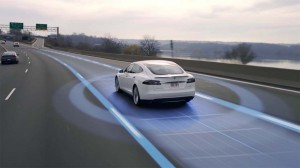
Another Tesla Model S has been involved in an accident while in Autopilot mode. This time the minor collision happened in China.
With two federal safety investigations already underway in the U.S., Tesla Motors could face scrutiny in China, as well, in the wake of an incident involving a Model S sedan operating in Autopilot mode.
The crash last week was relatively minor – unlike the fatal accident in Florida on May 9 – but it raises questions about both the capabilities of Tesla’s semi-autonomous technology and the way Autopilot is being sold and explained to the public. The driver, a 33-year-old computer programmer, claims he was told by the dealer’s staff that Autopilot allowed the vehicle to be operated hands-free.
Tesla confirmed the crash, but noted that the driver, Luo Zhen, was not following its guidelines. “As clearly communicated to the driver in the vehicle, autosteer is an assist feature that requires the driver to keep his hands on the steering wheel at all times, to always maintain control and responsibility for the vehicle, and to be prepared to take over at any time.”
Luo told the Reuters news service he was driving to work when he activated Autopilot. A dashboard videocam shows his car hitting a vehicle that was parked but not fully off the highway. There was relatively modest damage to both vehicles, but no injuries.
The crash might not have made news but for the May 9 crash on a Florida highway that took the life of 40-year-old former Navy SEAL Joshua Brown. The exact cause of the incident is still under investigation by both the National Highway Traffic Safety Administration and the National Transportation Safety Board. For its part, Tesla has suggested the car’s camera couldn’t distinguish the white truck Brown’s vehicle hit from a bright Florida sky, while its radar confused the trailer for an overhead sign.
There have been two other accidents since May in which drivers say they were using Autopilot, though Tesla disputes both those claims.
(Tesla’s gigafactory delay worsens the company’s financial situation. For more, Click Here.)
In the Florida crash, some evidence indicates driver Brown may have been watching a video, rather than keeping his eyes on the road. Tesla has repeatedly stated that Autopilot is not a true, autonomous system, though critics, including California’s Consumer Watchdog and the influential Consumer Reports, contend the battery-carmaker has done little to correct assumptions by owners that Autopilot can be operated hands-free.
Luo told Reuters that sales staff at the factory-owned Beijing dealership made it seem Autopilot could operate autonomously. “The impression they give everyone is that this is self-driving, this isn’t assisted driving.”
The wire service said other Tesla owners in China had similar perceptions based on what they claim to have been told by dealer sales staff.
Whether Tesla does or does not overstate the capabilities of Autopilot, there are plenty of indications that owners are stretching to the limits the systems capabilities. That includes one driver who posted a YouTube video showing himself activating Autopilot and then jumping into the sedan’s backseat.
(Click Here for a tour of the new Gigafactory.)
Both Consumer Watchdog and Consumer Reports have demanded that Tesla disable the technology, or at least do more to emphasize its limitations. The maker’s CEO Elon Musk has said Autopilot will remain operational, but Tesla is working with German technology supplier Bosch to improve the system.
On the positive side, a Tesla owner this month reported that his vehicle saved his life by autonomously driving him to the hospital after a potentially fatal situation occurred. Ironically, it appears that while the vehicle did get the driver to his destination he violated the carmaker’s stated guidelines by letting it run in essentially a fully autonomous mode.
The crashes – along with more than a dozen incidents involving autonomous vehicle prototypes being tested by Google – have raised concerns about the race to put self-driving vehicles on the road. Nonetheless, proponents including not only Musk but also NHTSA chief Mark Rosekind, contend the push to bring autonomous vehicles to market move forward.
(For more on Tesla’s big loss, Click Here.)
The safety agency expects to put in place the first set of national guidelines for testing autonomous vehicles by the end of this summer.

